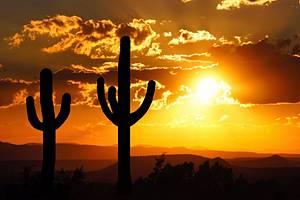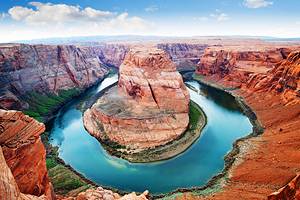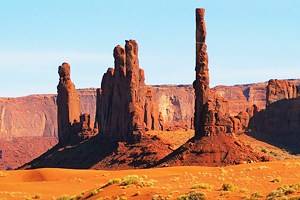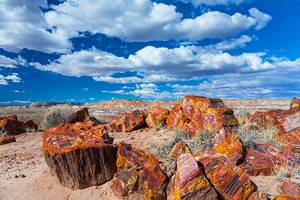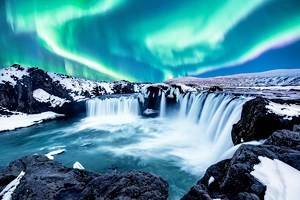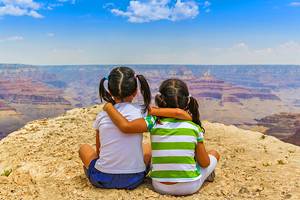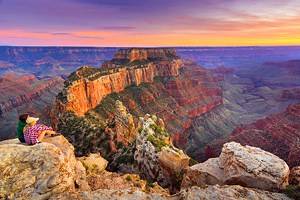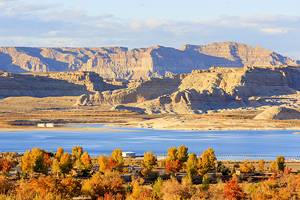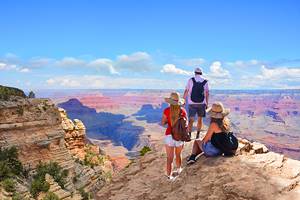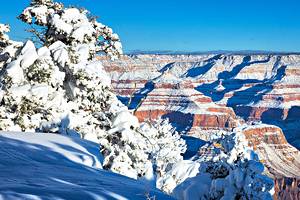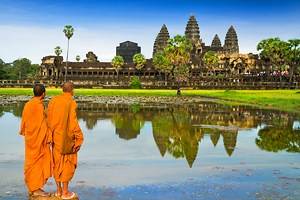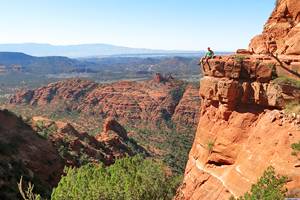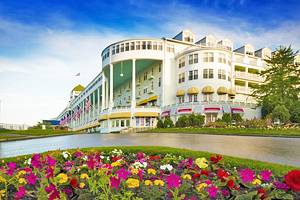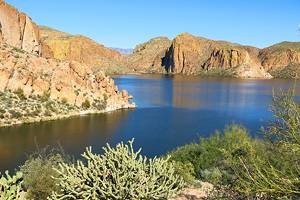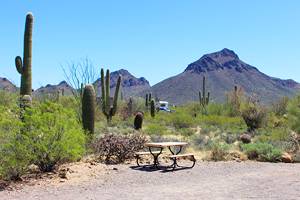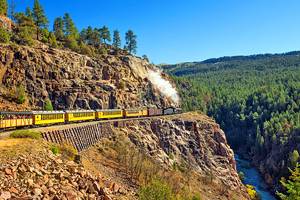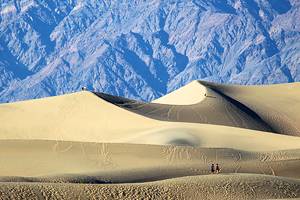State Parks in Arizona
Authors Michael and Lana Law hike, bike, and camp in Arizona's best state parks every chance they get.
State Parks in Arizona offer a bit of everything for everyone. Generally overlooked by casual vacationers who head directly to the Grand Canyon and national parks, these parks are wonderful places to go camping, hiking, swimming, boating, and general exploring.
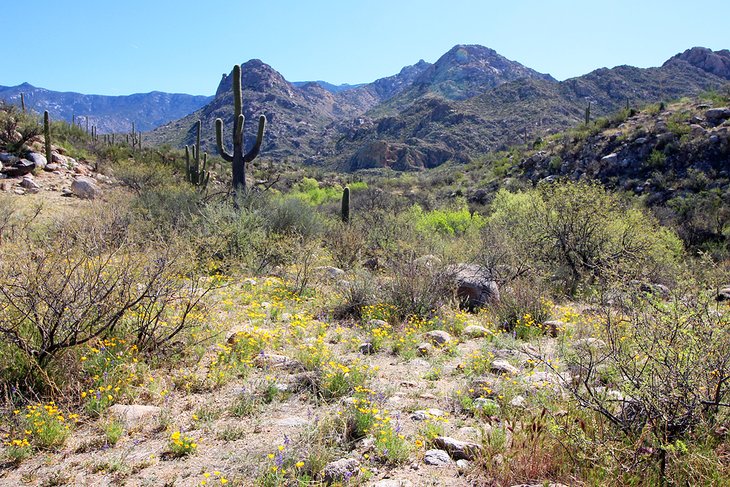
Don't limit yourself to just one. In many cases, the state parks are close together, so several can be visited in a day. Other state parks are close to major metropolitan areas and are perfect for heading out to when you're ready for a break from the city.
Arizona's State Parks cover most of the geographical, geological, and hydrological features in the state. Depending on the park, you can go deep underground, head into the mountains high above the desert, or go boating on the Colorado River.
Plan your Arizona state park adventure with our list of the best state parks in Arizona.
- Lake Havasu State Park
- Catalina State Park, Tucson
- Slide Rock State Park
- Kartchner Caverns State Park
- Tonto Natural Bridge State Park
- Lost Dutchman State Park
- Jerome State Historic Park
- Dead Horse Ranch State Park
- Red Rock & Red Rock Crossing State Parks, Sedona
- Yuma Territorial Prison State Park
- Tubac Presidio State Park
- Riordan Mansion State Park
- Map of State Parks in Arizona
- Best Time to Visit Arizona's State Parks
Lake Havasu State Park
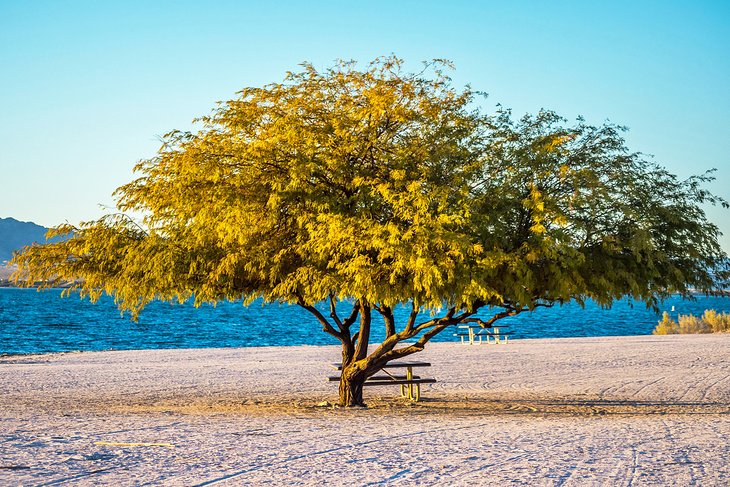
Highlights: A huge lake perfect for swimming, boating, and fishing; waterfront camping
For a desert state, Arizona has a surprisingly large number of lakes. One of the best is Lake Havasu, and along its shores, you'll find the delightful Lake Havasu State Park. The park is actually located inside Lake Havasu, one of the most popular cities in the state. To find the park, just head towards the famous London Bridge, and go due west towards the water.
Wide beaches with golden sands and palm trees make this a perfect place to enjoy a bit of waterside R&R. The beach is lapped by the cool, clear waters of the Colorado River, and lounging in the shallows under a warm Arizona sun is an ideal way to laze away an afternoon.
Not a swimmer? No problem. Back from the beach, the 1.75-mile Mohave Sunset trail winds its way along the shoreline, offering beautiful views of the surrounding hills. While you are out walking, swing by the Arroyo-Camino Interpretative Garden, and check out the plant life that inhabits the park and surrounding deserts.
Lake Havasu State Park is a popular boating location. Four well-maintained boat ramps are within the park. If you'd like to rent a boat, rentals are available from the concessionaire located in the park.
The park also has a small campground with 47 sites, many of them with views of the water. It's a popular campground; be sure to book well in advance. A daily vehicle fee is charged to enter the park.
Catalina State Park, Tucson
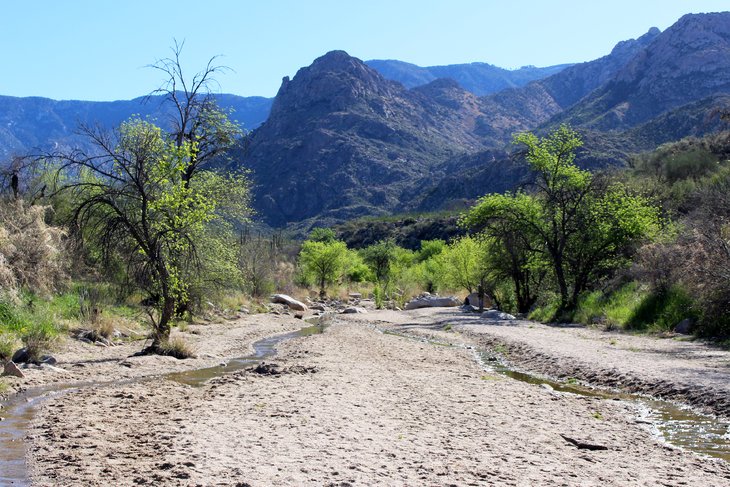
Highlights: Fantastic campground, good hiking trails, a birding hotspot, Saguaro cactus
Tucson is fortunate to have one of Arizona's best state parks right at its doorstep. The 5,500 acres of rugged mountains, washes, and canyons are a wonderful place to escape urban life.
The park is located along the northwest boundary of the city, an area noted for having some of the best resorts in the Tucson area. This makes it an ideal place to spend part of your day being active before retiring back poolside to recover with a swim.
Catalina State Park is home to many unique plants and animals, including over 5,000 Saguaro cactuses. The park is a hot spot for birding. Local spotters have recorded over 150 different species in among the trees and scrub bushes along with open desert areas.
If you enjoy getting out and exploring on foot, Catalina State Park has some of the best hiking trails in Tucson. For those who prefer two wheels or a horse beneath them, the park is also a good spot for mountain biking and equestrian activities.
To really get an appreciation for the park, consider setting up camp. Santa Catalina State Park has one of the best campgrounds in Arizona, with 120 sited complete with water and electricity. Spread out over a large area, every site has an amazing view of the mountains.
The campground can accommodate RVs of any size; even the largest will have no problem finding an ideal spot. Unique among state campgrounds, free (and fast!) Wi-Fi is provided to patrons. Modern comfort stations provide hot showers and flush toilets.
Slide Rock State Park
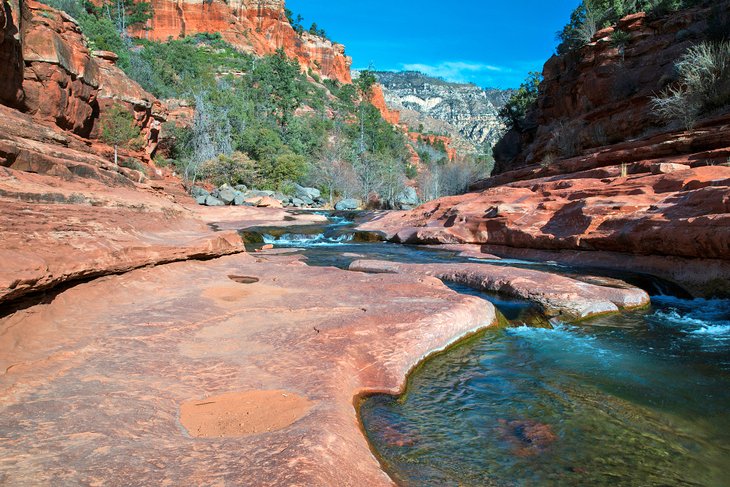
Highlights: Swimming and sliding in cool water, walking trails, historical apple orchard
Slide Rock State Park is one of the most popular state parks in Arizona. Set in a beautiful valley with Oak Creek rushing through the center, the park is one of the best spots to head to on a hot, sunny day.
The main attraction at the park is the creek and, more specifically, where it rushes down across the smooth red rocks. It's in these areas that an 80-foot natural channel, ideal for swimming has formed. In the summer, the creek is thronged with children having fun scooting down the river into the pools below.
Although the creek is the main attraction, as you walk towards the swimming hole, take a look around and notice the thriving apple orchard and old homestead buildings dating from the turn of the 20th century.
After exploring the park, take the short ride down to Sedona and grab a bite to eat, or, even better, check into one of Sedona's spa resorts that the town is famous for.
Kartchner Caverns State Park
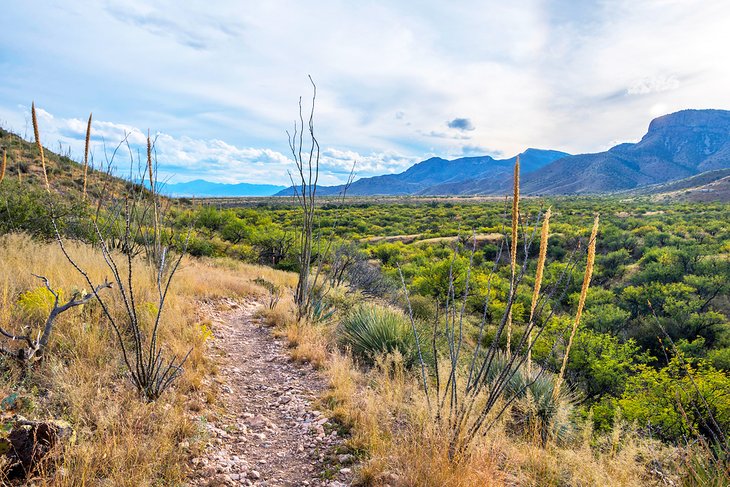
Highlights: Weird and wonderful underground rock formations, a chance to escape the heat in the summer
Just under an hour from Tucson, the impressive Kartchner Caves State Park showcases some of the most interesting underground formations in the state. A great family outing, a trip here down into the cool underground world is a perfect escape on the hottest of Arizona days. A variety of tours are on offer, ranging in length from 1.5 to 1.75 hours in length.
Highlights of the Kartchner Caves include the Throne Room and the Big Room. The Throne Room is notable for its impressive soda straw stalactites and the Kubla Khan tower. The bizarre brushite moonmilk formation in the Big Room is said to be the largest in the world.
Prior to descending underground, be sure to stop in at the visitor center to get an idea of what you are about to see and to check out the display of an ancient sloth skull dating back 36,000 years.
Tonto Natural Bridge State Park
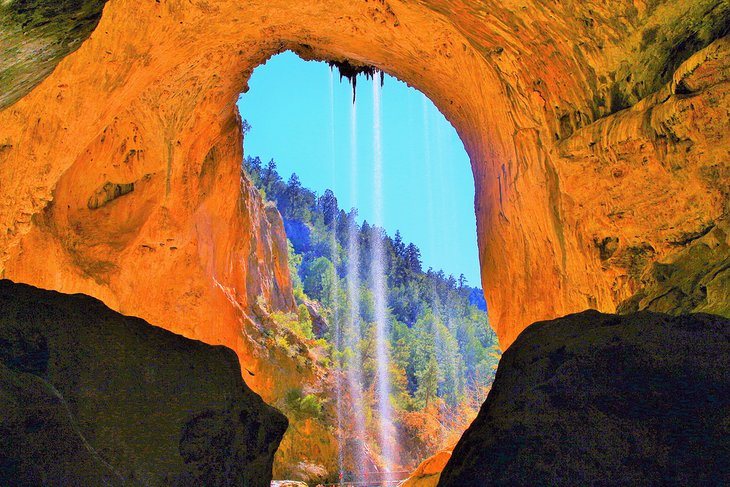
Highlights: An immense natural bridge set in a spectacular setting
If you find yourself up on the Mogollon Ridge in central Arizona, travel to one of the most spectacular state parks. Hidden deep within a valley is a huge natural bridge made of travertine. Tonto Natural Bridge spans an incredible 393 feet from one side of the tunnel to the other, and stands an impressive 183 feet high.
Views of the natural bridge are available from any one of the half-mile (or less), trails. Although the trails are short, some of them can be quite steep, so take your physical condition into consideration before heading down. Note that dogs are not allowed on any of the trails.
This entire area is stunningly beautiful. Many people choose to camp near Payson, about a 20-minute drive away.
Lost Dutchman State Park
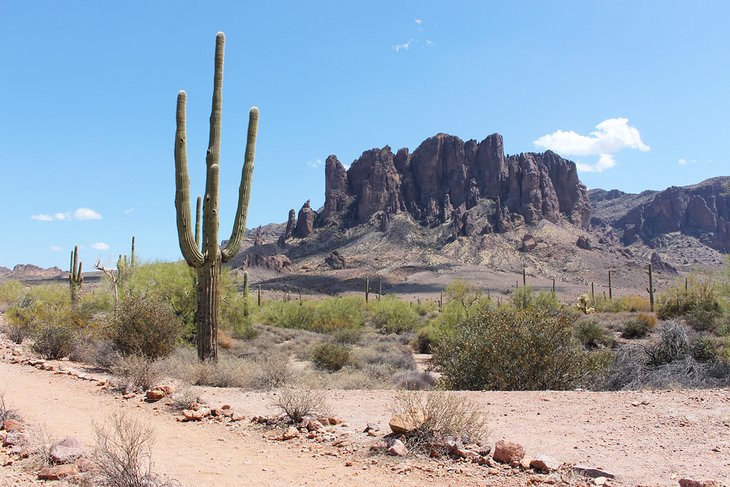
Highlights: Hiking trails in and around Flatiron Mountain, wildlife, great campground
Lost Dutchman State Park, located on the western edge of the greater Phoenix area in Apache Junction, is a great spot to escape from the urban jungle. The park is set dramatically against Flatiron Mountain, and it's hard to believe that you are only a short drive from a city of 5.5 million people.
Lost Dutchman State Park is noted for its excellent hiking trails, which range from pleasant strolls right through to a rugged (unmarked) route to the top of Flatiron Mountain, one of the best hikes near Phoenix. If you choose to take one of the six trails, be sure to keep an eye out for the park's resident animals, including Gila monsters, greater roadrunners, desert cottontails, mule deer, and the elusive bobcat.
Camping here in the desert is a real pleasure. The campground at Lost Dutchman State Park is one of the best places to camp near Phoenix, and reservations well in advance are recommended. You can choose from 138 sites (68 serviced with water and 50/30/20-amp electrical, 70 unserviced) depending on the type of equipment you travel with.
Jerome State Historic Park
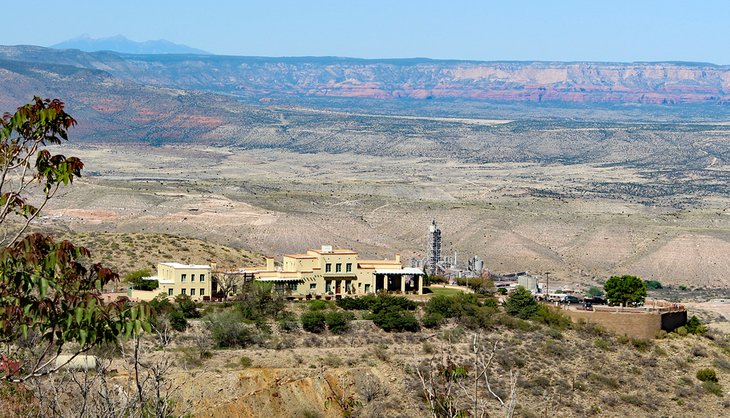
Highlights: Historic and authentic mining town, the chance to peer 1,900 feet into the earth
A trip to the ghost town of Jerome would not be complete without a stop in at the Jerome State Historic Park. The main feature of the park is the restored home of James S. Douglas, owner of the Little Daisy Mine. Inside this beautiful home are displays of Jerome and its history, mining information and minerals, and background on the Douglas family.
Be sure to check out the fascinating 3D display of the town that shows not only the surface areas of Jerome, but also the mine shafts underneath.
Outside the museum is the original 1918 Audrey Shaft Headframe Park. Step out onto the glass covering the shaft, and peer down 1,900 feet into the earth. From this shaft, more than 3.6 million tons of ore were brought to the surface. The area around the headframe contains pieces of mining equipment.
Dead Horse Ranch State Park
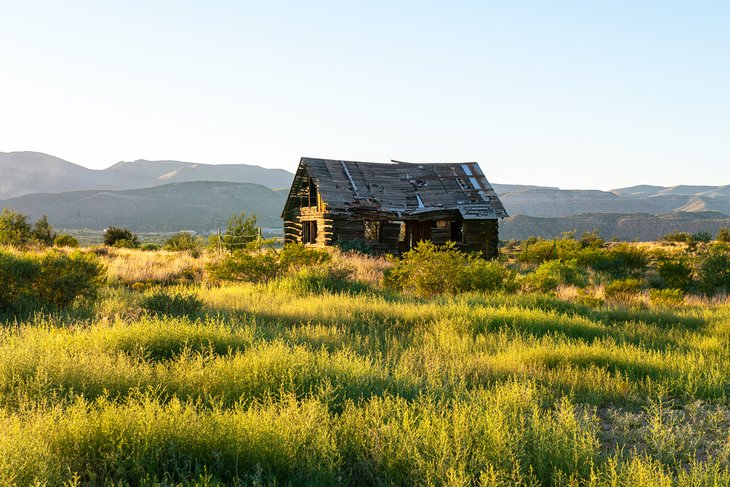
Highlights: The chance to go horseback riding, a pleasant campground, and walking trails
Don't let the name of the somewhat unfortunately named Dead Horse Ranch State Park put you off a visit. This small park near the city of Cottonwood and a bit farther from Sedona is an ideal family weekend getaway with lakes, playgrounds, walking trails, and a campground.
One of the unique things to do at Dead Horse Ranch State Park is to ride a very much alive horse around on the equestrian trails spread throughout the park. An on-site concessionaire rents horses and will take you on a guided tour led by a wrangler.
The park campground has 100 serviced sites with water and electricity (30/50-amp service). The sites are spread out over four loops: Quail, Red-Tail, Cooper's Hawk, and Blackhawk. Small trees and brush make a majority of the sites relatively private. Comfort stations have flush toilets and hot showers.
Red Rock & Red Rock Crossing State Parks, Sedona
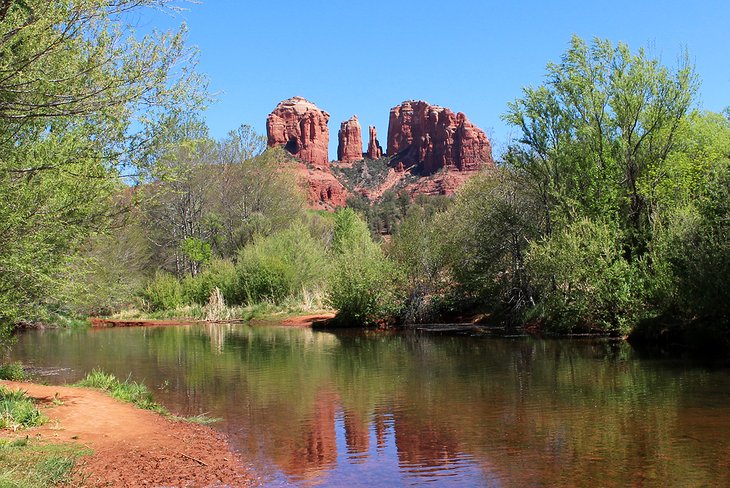
Highlights: Famous viewpoint of Cathedral Rock, hiking trails, abundant birdlife
Just a short drive west of Sedona, are Red Rock State Park and Red Rock Crossing Park (Crescent Moon Picnic Site). The former is a nice hiking area, and the latter is home to one of Sedona's famous views.
Red Rock State Park is a small nature preserve along both banks of Oak Creek. Within its 286 acres, you'll find an assortment of hiking trails that link together to make a series of interesting loops. The park is a good place for families. The level and easy hiking trails and safe exploration areas make it an ideal place for the kids to run wild.
The park is also an ideal location for spotting wildlife. Frequent sightings of mule deer and javelina are common. Bobcats also inhabit the area, but sightings are relatively rare. Birders rave about the variety and quantity of birds that call the park home. Red Rock State Park is part of the Lower Oak Creek Important Bird Area.
Red Rock Crossing State Park, also set along Oak Creek, offers picnic areas and a pleasant place to relax. Most visitors come here for the famous view of Cathedral Rock reflecting in the creek. Depending on the water level, you can sometimes walk out into the creek on exposed rocks. At other times, the water may be too deep.
Yuma Territorial Prison State Park
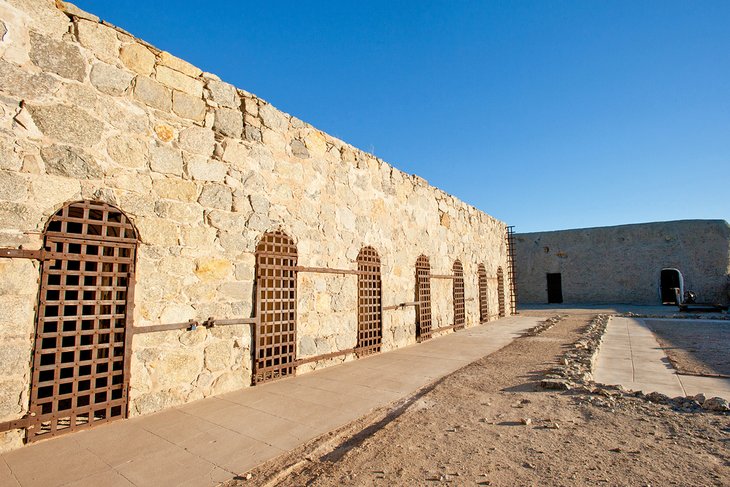
Highlights: Old jail cells dating from the 19th century, a visitor center with interactive displays
Down in the far southwest of the state lies the small city of Yuma, home to the Yuma Territorial Prison State Park. Dating from 1879, this former prison is open to the public. Take a wander around the grounds to see the reconstructed guard tower, prisoner cemetery, and dining hall.
The original cell blocks are also open. Take a step inside and experience what a captured outlaw might have had to endure when the prison was operating at the turn of the 19th century. Be sure to swing by the modern visitor center where you'll find interesting displays of artifacts and be able to view a video presentation.
Address: 220 Prison Hill Rd, Yuma, Arizona
Tubac Presidio State Park
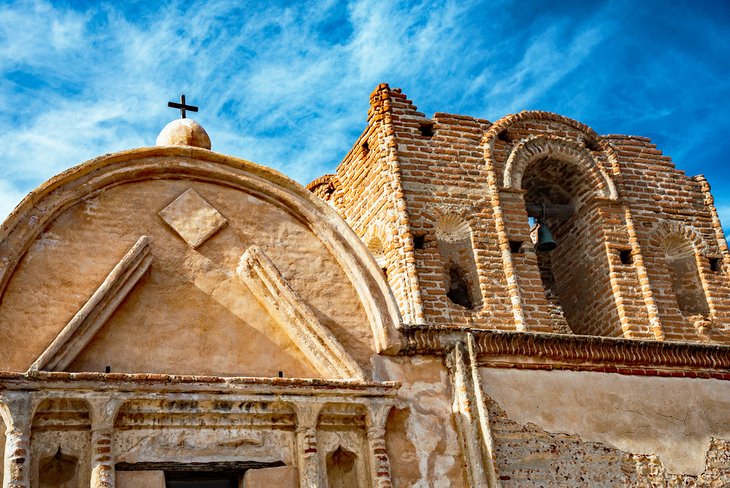
Highlights: An 18th-century presidio, funky and fun artists' market
Tubac Presidio State Park was the very first Arizona state park created in order to preserve the oldest Spanish presidio, dating from 1752. In addition to the ruins, the park also preserves seven additional buildings, some of which include a schoolhouse, a Captain's house, and the Rojas House. The four-mile Anza walking trail leading to Tumacácori National Historic Park leaves from the southwest corner of the property.
The park is a pleasant place for a short stroll and can be combined with a shopping trip to the nearby Tubac artists' marketplace, home to countless creative folk. You can find pretty much anything here, from paintings to jewelry to iron garden fixtures and brightly painted ceramics.
Riordan Mansion State Park
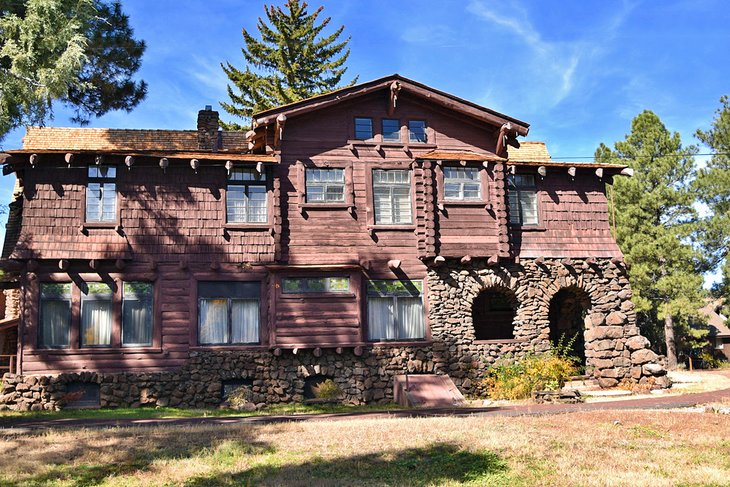
Highlights: A perfectly restored 20th-century Arts & Crafts style wood home
Located in Flagstaff, not far from Northern Arizona University is Riordan Mansion State Park. Here, you'll find a lovely home set among towering pine trees.
The home was built by the same architect, Charles Whittlesey, who created El Tovar Hotel at the Grand Canyon's south rim. Carefully restored over the years, this 1904 home is considered by many to be one of Arizona's best examples of the Arts and Crafts style of architecture.
Tours of the home and its 40 rooms showcase the seemingly mundane creature comforts, like electricity, hot and cold running water, and central heat, that we take for granted today but were revolutionary and considered very modern at the turn of the century.
Map of State Parks in Arizona
Best Time to Visit Arizona's State Parks
The best times to visit Arizona's state parks are in the spring and fall. At these times the temperatures are more moderate and you'll be able to get out on the trails and enjoy all that the parks have to offer. Daytime temperatures are in the low- to mid-80s Fahrenheit, depending on the elevation of the park, and nights are cool and good for sleeping.
March, April, and May are lovely with spring blooms, and September and October are perfect for swimming and camping. Expect to see daytime highs in the low 70s Fahrenheit, but watch out for the occasional thunderstorm in early September.
The winter months of November, December, January, and February are also good, however, you'll find that the mornings can be very cold and the days, although sunny, remain fairly cool. The other challenge with the winter is that the days are quite short.


